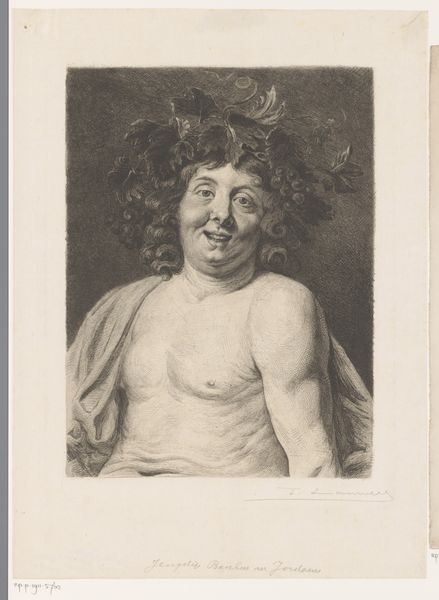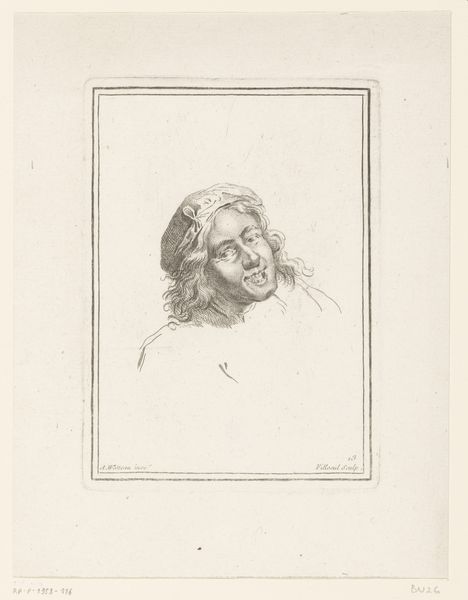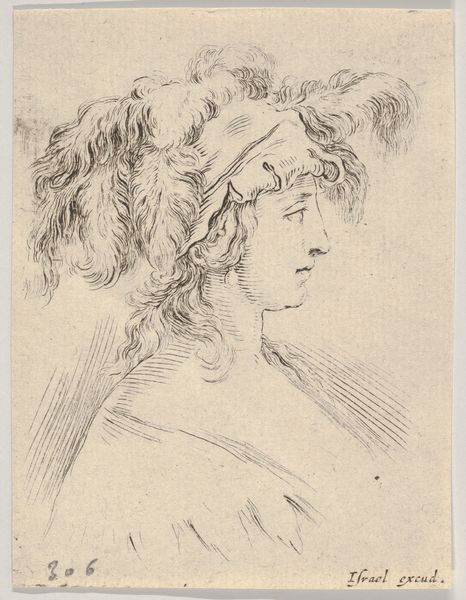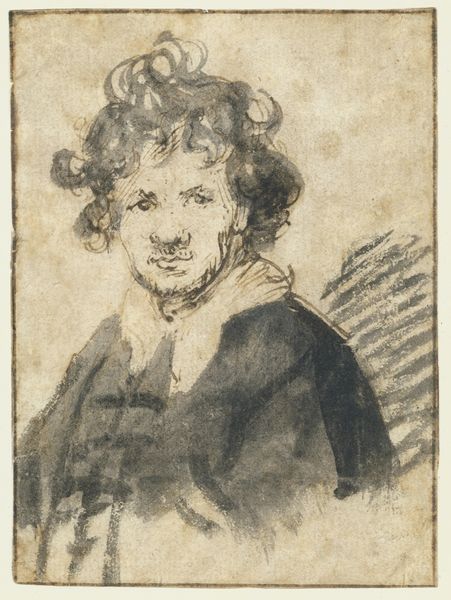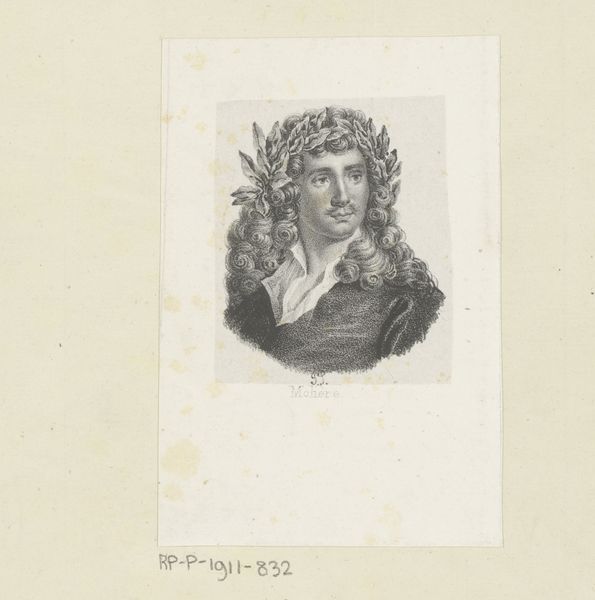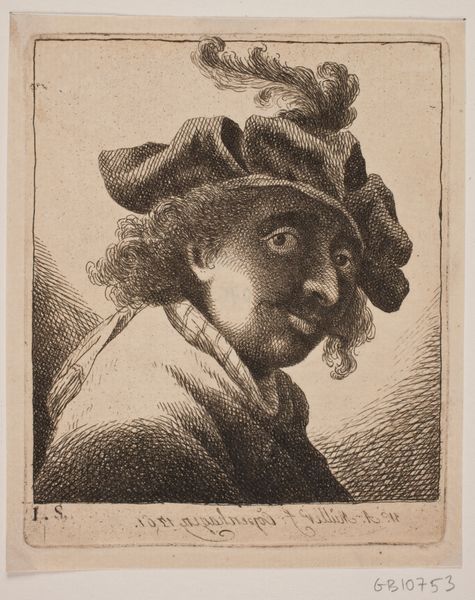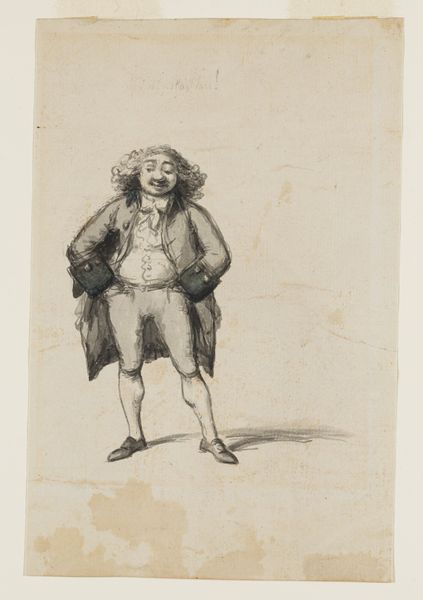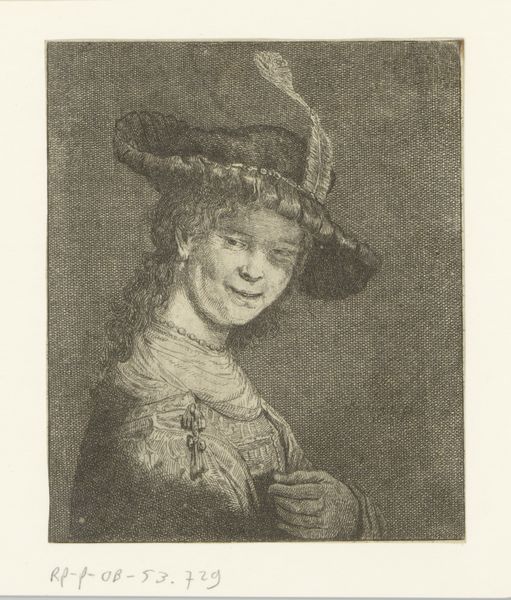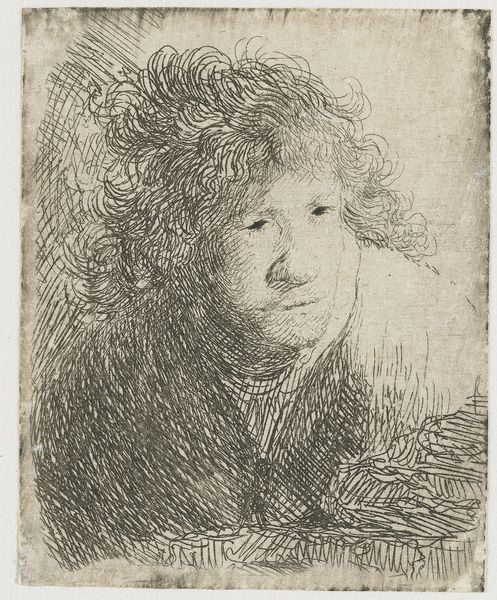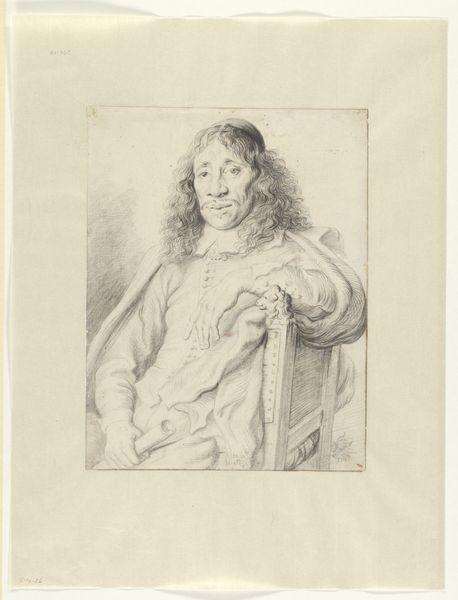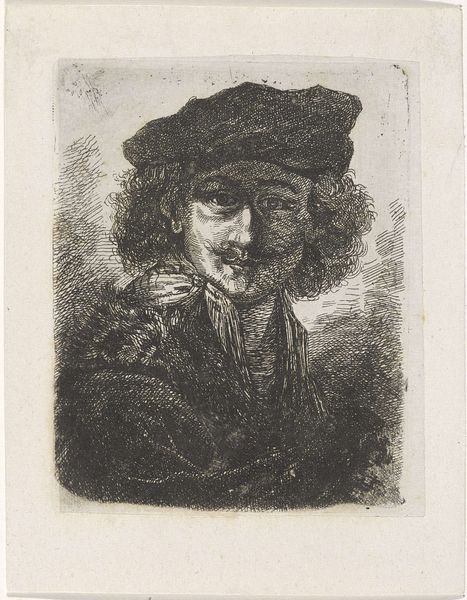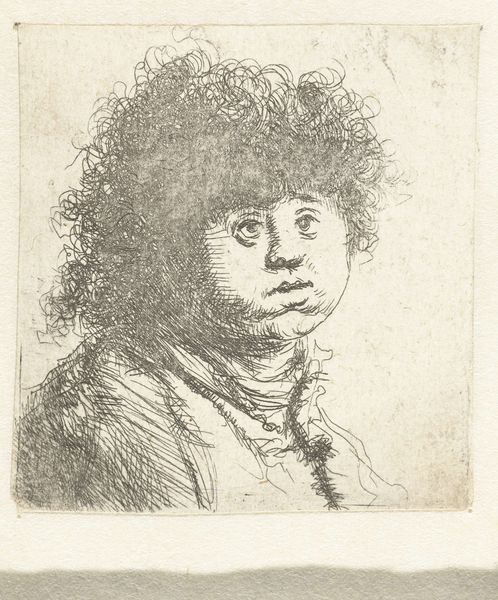
Dimensions: height 317 mm, width 236 mm
Copyright: Rijks Museum: Open Domain
Curator: Look at this fascinating etching, "Head of a Young Bacchus" by Frans Lauwers, dating between 1864 and 1911. Editor: He’s… jolly, isn’t he? Almost ridiculously so. The combination of the heavy lines of the etching and his flushed face makes him appear wonderfully inebriated. Curator: Absolutely. Bacchus, or Dionysus as the Greeks knew him, represents more than simple intoxication. It's about liberation, ecstasy, and the disruption of social norms, often finding expression in festive communal experiences. How do you see the visual symbolism connecting to those concepts here? Editor: The grapes and vine leaves adorning his head are classic Bacchanalian symbols. They are suggestive of fertility, wine-making, and revelry. Notice how Lauwers has positioned them—not as a refined crown, but almost a chaotic jumble, expressive of raw energy. And that coy grin! It hints at the intoxicating effects that lie behind the god’s demeanor. Curator: Indeed. Beyond the recognizable symbolism, consider the broader context. Genre painting, with its focus on everyday life, often used mythological figures to subtly comment on contemporary social mores. By depicting Bacchus in what appears to be an unflattering way, was Lauwers perhaps critiquing societal excesses, or even offering a playful subversion of established authority? Editor: Interesting point! Maybe the unkempt nature of the figure is also Lauwers way of illustrating his personal perspective on Baroque sensibilities as antiquated and disruptive. In this image, though, it mostly brings to mind associations between divine ecstasy and earthly physicality. There's a deep sense of earthy abandon, captured with deceptively simple lines. Curator: It really draws you in with that visual tension, doesn't it? Considering that etching emerged as a democratic and easily reproducible medium in the 19th century, the symbolism may have had social meaning. Disseminating a vision of power through common themes for broader contemplation. Editor: A democratization of divinity, if you will! It’s intriguing how a single, seemingly straightforward image can provoke such a wealth of interpretations, ranging from pure pleasure to profound social commentary. Curator: Precisely, and that, I think, is the lasting power and contribution of works such as these. They open us to unexpected meanings and different possibilities of relating to one another through art.
Comments
No comments
Be the first to comment and join the conversation on the ultimate creative platform.
